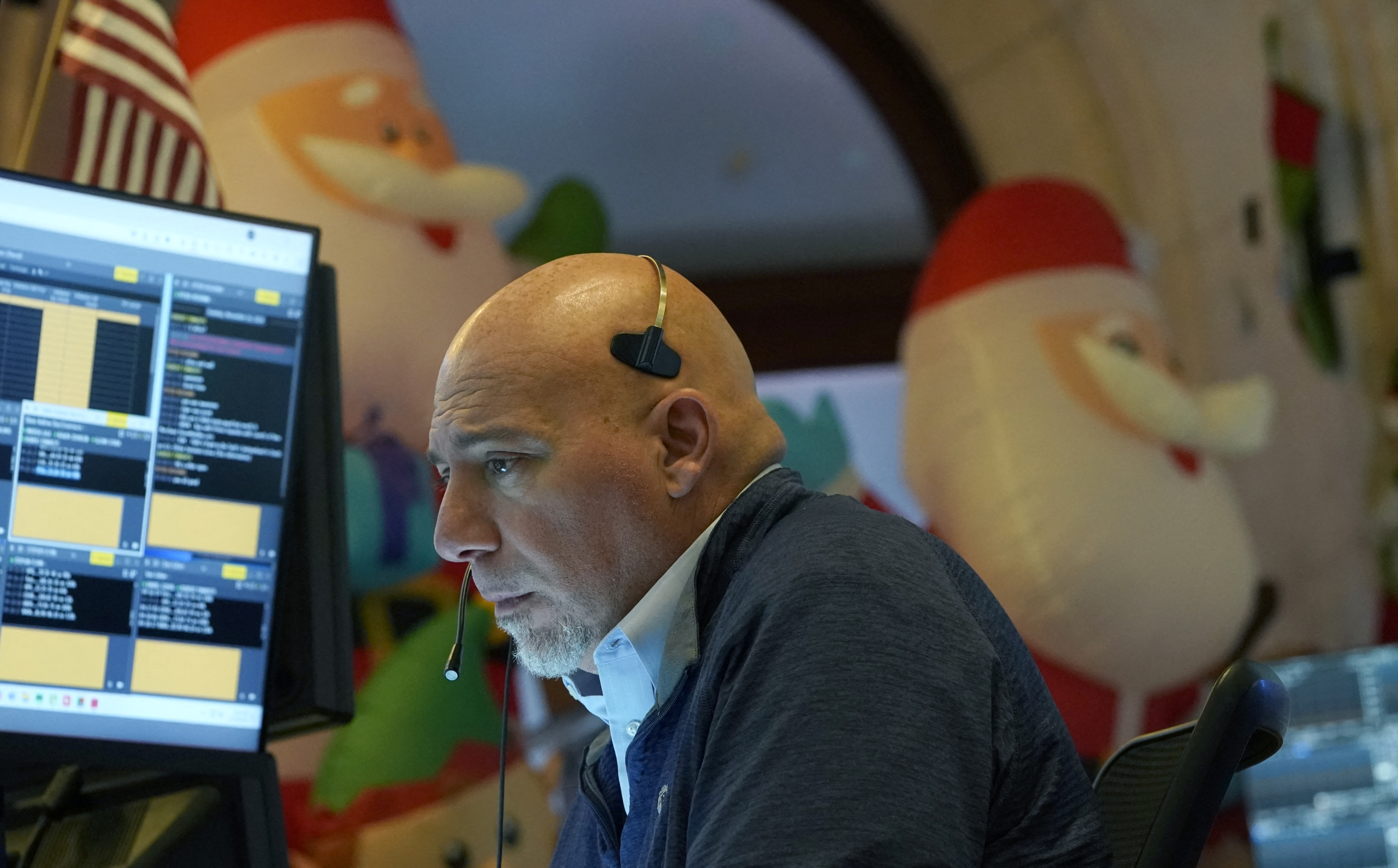Stock market today: Dow, S&P 500, Nasdaq clobbered as Fed, Powell signal fewer rate cuts in 2025

Stocks were clobbered Wednesday after the Federal Reserve, despite slashing interest rates by 25 basis points, signaled it would cut fewer times next year than previously projected.
All three major reversed gains following the decision to end with steep losses. The Dow Jones Industrial Average (^DJI) was down about 2.6%, or over 1,000 points, clinching its 10th straight down session, the longest losing streak since 1974. Meanwhile, the S&P 500 (^GSPC) fell roughly 3%, and tech-heavy Nasdaq Composite (^IXIC) slid more than 3.5%.
Ten Fed officials estimated two interest rate cuts next year, fewer than four seen in September, as officials marked up their projections for core inflation and economic growth next year, while lowering their forecast for the unemployment rate in 2025.
"The slower pace of cuts for next year really reflects both the higher inflation readings we had this year and the expectation inflation will be higher," Fed Chair Jerome Powell said. He added later that as long as the economy and labor market remain "solid," "we can be cautious as we consider further cuts."
Wednesday's Fed decisions wasn't unanimous, meanwhile. Newly appointed Cleveland Fed president Beth Hammack objected, preferring not to cut rates. Capital Economics chief North America economist pointed out this dissent makes the Fed's decision Wednesday a "hawkish cut" with the risk that the Federal Reserve could keep interest rates higher for longer than initially thought.
The 10-year Treasury yield (^TNX) rose nearly 11 basis points following Powell's press conference to hover just under 4.5%.
Rate-sensitive areas of the market sold off throughout the afternoon. The small-cap Russell 2000 index (^RUT) fell roughly 4%. Meanwhile, Real Estate (XLRE) was among the worst performers in the S&P 500 also falling almost 4%.
Meanwhile, the Dow has been on its longest losing streak in nearly a half-century, spoiling the mood of what has been a near-universal rip-roaring rally in 2024. The blue-chip index has been left behind in a tech-focused bump lately.
LIVE 18 updatesBreaking news
See all








